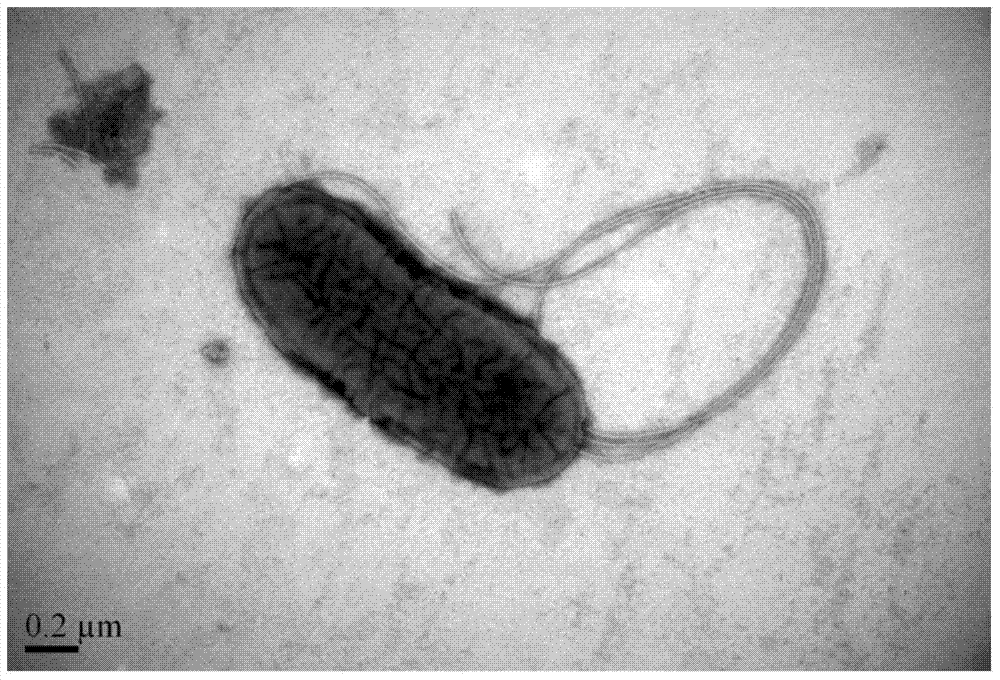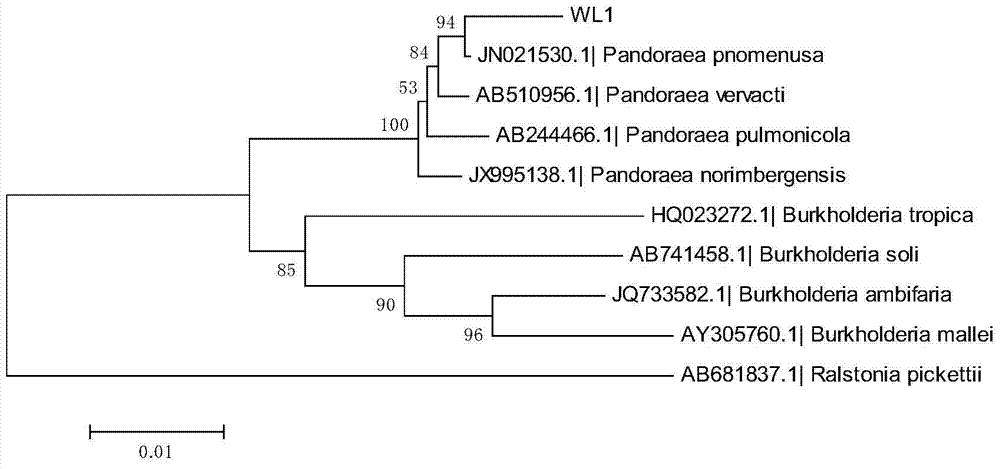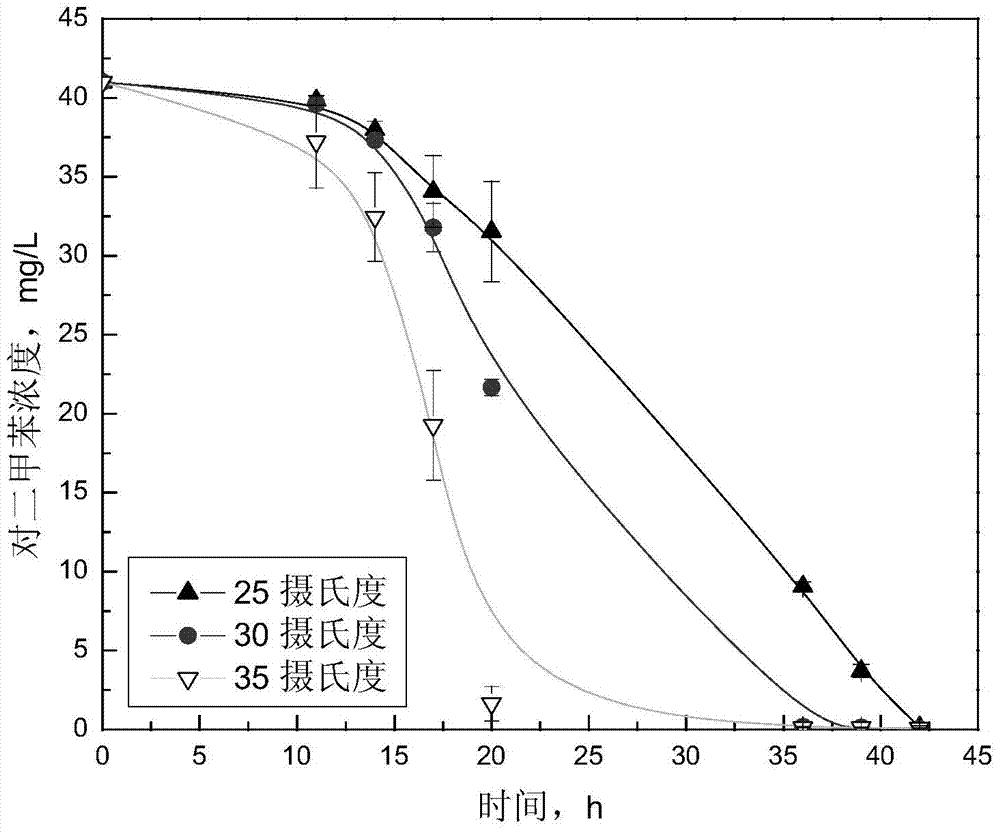Bacterial strain for degradation of p-xylene and culture method and application thereof
A technology for paraxylene and a culture method, which is applied to the field of paraxylene degrading strains and their culture, can solve the problems of rareness, culture conditions, optimized analysis of separation and purification methods, and no treatment of xylene organic waste gas, etc. The effect of strong substrate adaptability, good substrate breadth, and efficient degradation ability
- Summary
- Abstract
- Description
- Claims
- Application Information
AI Technical Summary
Problems solved by technology
Method used
Image
Examples
Embodiment 1
[0042] Embodiment 1: Isolation and identification of bacterial strains:
[0043] 1. Domestication and breeding of bacterial strains:
[0044] The activated sludge taken from the sewage outlet of the pharmaceutical factory (March 2011, Zhejiang Puluo Kangyu Biopharmaceutical Co., Ltd., Dongyang City, Zhejiang Province) was introduced into the target pollutant (p-xylene) for aeration and domestication (at least 1 months), and use a 300mL culture bottle in a constant temperature shaker to add 1mL of activated sludge, 50mL of inorganic salt medium and 10-20μL of target pollutants (p-xylene), enrich for several cycles (3-5 times) , to obtain the microbial community that can degrade the target pollutant (p-xylene); use R2A solid medium (10-fold dilution coating method, streaking method) to purify and isolate the degradable strain, that is, to use sterile deionized water to deionize the microbial community Serial dilution was carried out according to the 10-fold dilution method, and...
Embodiment 2
[0054] Example 2: Degradation characteristics of Pandoraea sp. WL1
[0055] 1. Degradation characteristics of Pandoraea sp. WL1 under different temperature conditions (25-35°C):
[0056] Using p-xylene as the sole carbon source of Pandoraea sp. WL1, inoculate 3mL of logarithmic phase bacterial suspension (OD 600nm =0.235) in 100mL inorganic salt medium (initial pH=6.5) and placed in a 630mL sealed culture bottle (two parallel samples and one blank control group were designed under each temperature condition), and p-xylene was added to make the system initially The concentration is 41.0mg / L, respectively placed in 25, 30, 35 ℃, 150r / min constant temperature shaker for continuous culture, sampling and analysis at regular intervals (results are as follows image 3 ). This example shows that at a relatively high initial concentration of p-xylene (41.0mg / L), the degradation characteristics at a temperature of 35°C are significantly better than those at 25°C and 30°C; among them, ...
Embodiment 3
[0063] Example 3: Pandoraea sp. WL1 was inoculated into a biological trickling filter device to treat simulated organic waste gas containing p-xylene
[0064] Using the bio-trickling filter device and method disclosed in the Chinese patent application No. 201210019232.2, Pandoraea sp. WL1 was inoculated into the bio-trickling filter device to treat organic waste gas containing p-xylene, and acclimated to In the stable stage, the simulated organic waste gas is prepared with p-xylene as the target pollutant, and the suspension of Pandoraea sp. Simulated organic waste gas treatment (results such as Figure 7). The results showed that the bio-trickling filter reached the stable operation stage after about 14 days of acclimatization process. In the early stage of film acclimatization (1-10 days), the intake concentration is maintained at 200-800mg / m 3 Within the range, the removal efficiency of p-xylene is unstable (50% to 80%); in the late stage of film acclimation, maintain it...
PUM
 Login to View More
Login to View More Abstract
Description
Claims
Application Information
 Login to View More
Login to View More - R&D
- Intellectual Property
- Life Sciences
- Materials
- Tech Scout
- Unparalleled Data Quality
- Higher Quality Content
- 60% Fewer Hallucinations
Browse by: Latest US Patents, China's latest patents, Technical Efficacy Thesaurus, Application Domain, Technology Topic, Popular Technical Reports.
© 2025 PatSnap. All rights reserved.Legal|Privacy policy|Modern Slavery Act Transparency Statement|Sitemap|About US| Contact US: help@patsnap.com



